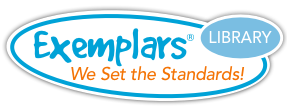Grade 1 - Algebraic Reasoning Unit
Standards covered:
- 1.3 Number and operations
-
1.3B
Use objects and pictorial models to solve word problems involving joining, separating, and comparing sets within 20 and unknowns as any one of the terms in the problem such as 2 + 4 = [ ]; 3 + [ ] = 7; and 5 = [ ] - 3.
- 1.5 Algebraic reasoning
-
1.5F
Determine the unknown whole number in an addition or subtraction equation when the unknown may be any one of the three or four terms in the equation.
The Algebraic Reasoning Unit involves understanding that the unknown can be any one of the three or four terms in an equation. Questions to answer may include:
- If I know the starting number and the change, how can I find the result? (Such as 2 + 4 = ?)
- If I know the starting number and the result, how can I find the change? (Such as 7 = 3 + ?)
- If I know the change and the result, how can I find the starting number? (Such as ? - 3 = 5)
Summative Assessment Task
Students determine how many blue M&M's Alex has if he has the same total amount of M&M's as Joe.
Instructional Tasks/Formative Assessments
Students determine how many fewer leaves Caleb collects than Ashley.
Students determine how many rocks Abigail has in her collection if she has five more rocks than Nathan.
Students determine the number of flowers given to Dad, if there are two flowers left in the vase.
Given a total of eight hats, students determine how many hats are pink if Camila has four purple hats.
Students determine how many pennies are in Sam's fourth pocket so that he can buy a pirate pencil that costs 20 pennies.
Given a total number of seashells, students determine how many seashells Sofia had to start with after Claire brings her six more seashells.

The N/A classification refers to TEKS Standards that cannot be assessed through problem solving.
For this reason, tasks have not been included for these particular standards.
K.7A K.7B K.9B K.9C K.9D